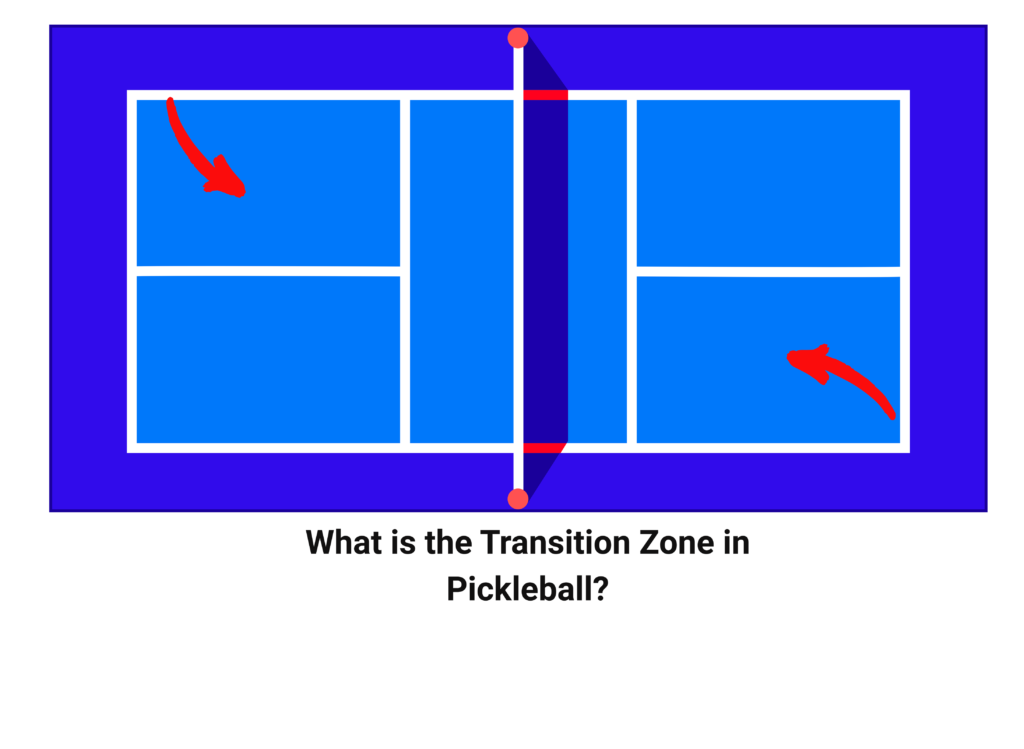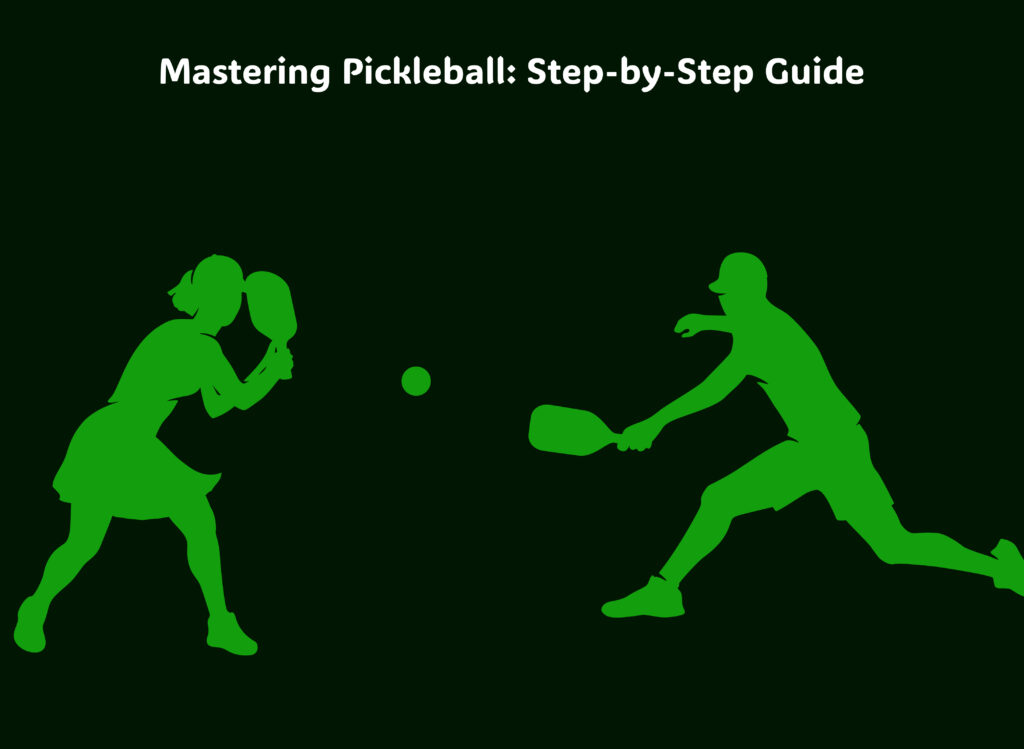- Transition Zone in Pickleball
- Transition Zone for Beginners: Survival Starts with Smart Movement
- Transition Zone in Pickleball for Intermediate Players: Reset and Reclaim the Kitchen
- Transition Zone for Advanced Players: Tactical Neutralising and Sneaky Offence
- Training to Conquer the Transition Zone at Any Level
- Final Thoughts: Own the Transition Zone, Own the Game
Transition Zone in Pickleball
The transition zone in Pickleball —sometimes nicknamed the no-man’s land—is the area of the court between the baseline and the non-volley line (Kitchen line). It’s where rallies often swing from safe to chaotic, and where poor footwork and rushed shots are most brutally exposed. If you’ve played pickleball even a handful of times at your local UK club, you’ll have heard players muttering, “Get out of the transition zone!” or “Mind the no-man’s land!” But what exactly is this infamous space, and why does it cause so much trouble?
In UK pickleball, where fast-paced doubles play and tight indoor courts are the norm, understanding the transition zone is absolutely crucial. Whether you’re a beginner just finding your feet, an intermediate trying to get to the net with more consistency, or an advanced player tactically using the transition zone to reset rallies, this patch of court can either be your undoing or your secret weapon.
Transition Zone for Beginners: Survival Starts with Smart Movement
For beginners in the UK, the transition zone feels like a danger zone—and honestly, it is. When you’re stuck halfway between the baseline and the Kitchen, your opponents have more angles to attack, and you have less time to react. It’s tempting to rush forward after a serve or third shot, but without a plan, you’ll end up in no-man’s land with your paddle down and your feet frozen.
How to Handle the Transition Zone Early On:
✔ After serving or returning, move forward with purpose, not panic.
✔ Practise split-stepping as your opponent hits, keeping your weight low and ready to move.
✔ If you’re caught in the transition zone, don’t swing wildly—reset the ball into the Kitchen softly.
✔ Keep your paddle up and out front, ready for quick volleys or blocks.
✔ Remember: it’s okay to pause if needed. Better a controlled reset than a desperate sprint.
Many UK clubs now coach beginners to focus on calm resets and intentional footwork when crossing the transition zone. The goal isn’t to blast through it—it’s to move smartly through it, taking space as you earn it.
🔥 Key takeaway: For beginners, survival in the transition zone means moving with control, not rushing in blind.
Transition Zone in Pickleball for Intermediate Players: Reset and Reclaim the Kitchen
At intermediate level, players understand they shouldn’t hang about in the transition zone—but they often still struggle to handle aggressive drives or fast volleys while crossing it. The real skill here isn’t just sprinting to the Kitchen—it’s resetting under pressure and regaining control point by point.
How Intermediate Players Dominate the Transition Zone:
✔ Practise low, soft resets from mid-court that land safely in the Kitchen.
✔ Recognise when to block and reset versus when to counterattack.
✔ Stay low and compact—bending your knees, not leaning forward or back.
✔ Use your non-dominant hand to guide stabilised two-handed resets when needed.
✔ Time your movements—don’t move forward until you’ve hit a controlled shot.
In UK tournaments and ladders, intermediate players who successfully manage the transition zone are the ones who build pressure by inching forward smartly, not rushing foolishly. Every reset buys them time. Every controlled move forward closes the distance between chaos and control. You don’t have to win the point from the transition zone—you just have to survive it and set up the next shot.
🔥 Key takeaway: Intermediate players know the transition zone is a battlefield—your job is to win small positional victories until you’re at the line.
Transition Zone for Advanced Players: Tactical Neutralising and Sneaky Offence
At advanced levels, the transition zone becomes more than a survival zone—it becomes a tactical space. Top UK players often deliberately linger in the transition zone, baiting attacks, setting traps, and using resets and flicks to turn defence into offence.
How Advanced Players Master the Transition Zone:
✔ Sit low in a balanced stance, reading opponents’ paddle and body language.
✔ Absorb drives with open-faced blocks, deadening the ball into the Kitchen.
✔ Disguise flicks and roll shots from low positions, forcing rushed replies.
✔ Angle resets wide to make opponents move laterally.
✔ Know when to move and when to hold position—patience wins more points than panic.
In high-level UK play, you’ll notice that elite players don’t always sprint blindly to the Kitchen after every shot. Instead, they glide forward one step at a time, taking ground when they’ve earned it. They neutralise aggressive opponents with calm resets and occasionally surprise them with aggressive counters when a high ball floats.
🔥 Key takeaway: For advanced players, the transition zone is a chessboard—play your moves smartly, bait mistakes, and transition on your terms.
Training to Conquer the Transition Zone at Any Level
Handling the transition zone isn’t just a mental skill—it’s physical, too. Footwork, balance, and paddle position are critical. Many UK clubs now include dedicated transition zone drills in coaching sessions to build comfort and confidence in this critical area.
Best Drills for Transition Mastery:
✔ Reset-to-advance drill: Start at mid-court, reset three balls into the Kitchen before moving forward.
✔ Fast hands transition drill: Defend hard drives with blocks while slowly moving up.
✔ Shadow footwork drills: Practise split-stepping and advancing in rhythm with imaginary shots.
✔ Roll shot drills: Practise disguised mini roll shots from mid-court under pressure.
The more you train deliberate movement and soft resets through the transition zone, the less it will feel like a panic zone and the more it will feel like part of your overall court strategy.
🔥 Key takeaway: Train to be comfortable in uncomfortable places—mastering the transition zone is the bridge between baseline and Kitchen dominance.
Final Thoughts: Own the Transition Zone, Own the Game
In pickleball, the rally often swings in the transition zone. It’s where pressure builds, points turn, and players either crumble or climb. Whether you’re new to the sport or playing advanced doubles in UK tournaments, your ability to handle this space calmly and smartly will massively impact your success.
Key Takeaways:
✔ Beginners must move with control and focus on soft resets through the transition zone.
✔ Intermediate players must balance resets with smart forward movement.
✔ Advanced players should use the transition zone tactically—reset, bait, and attack when ready.
✔ Drilling footwork, resets, and fast hands sharpens your transitional game.
✔ In UK pickleball, players who own the transition zone often own the court.
👀 Enjoyed this read? Fancy levelling up your game even more? Keep reading Dink Quest for the best pickleball tips, drills, and news in the UK!
🎯 Check out these popular posts next:
📬 Subscribe to the Dink Quest newsletter to Stay in the Loop and be the first to get new blog posts, UK pickleball news, tips, player spotlights and exclusive offers
👉 Click here to subscribe now
Get discounts and exclusive offers for Paddles, clothing and accessories from our shop
We’ve got plenty more where that came from! Whether you’re working on your third shot drop, curious about dinking strategies, or just figuring out how to hold your paddle without it flying across the court we’ve got you covered.
👉 Keep reading, keep learning, and keep dinking smart. Let’s grow the game together, one dink at a time. 💚
See you on the court!
The Dinkquest Team UK 🏓



